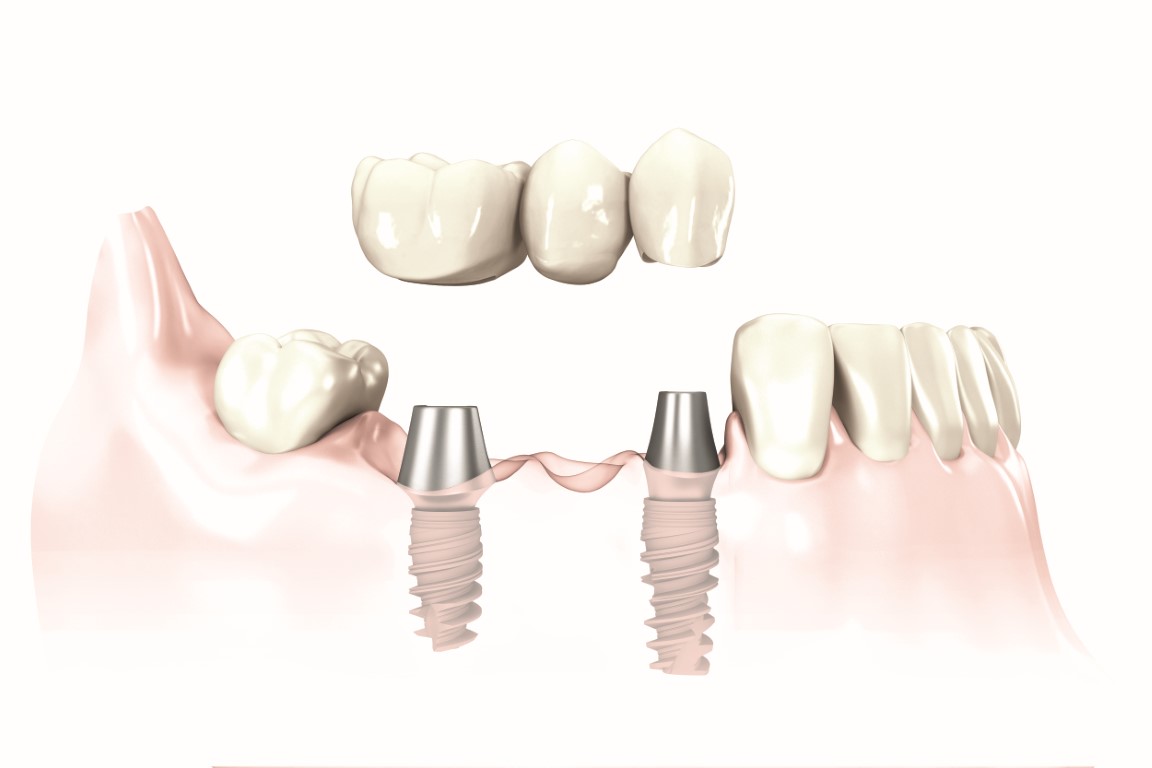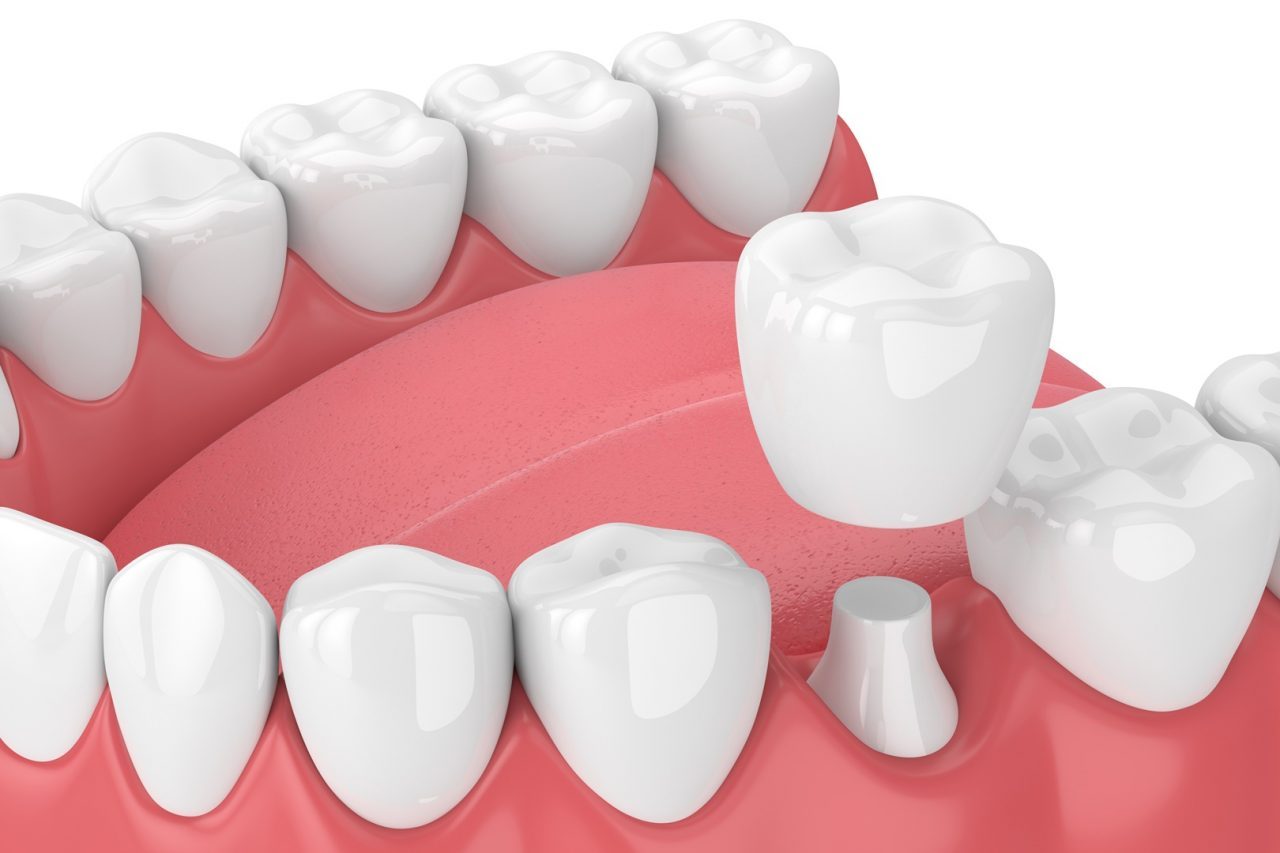In case a tooth is extensively damaged or crooked but other than that the root is good, there is no inflammation and therefore can be kept then the tooth is being covered by a dental root canal crown. A tooth crown protects the tooth and solves the functional and aesthetic problems. With crowns and bridges we can imitate the real teeth perfectly so that even experienced eyes might not see the difference between original and fake. Crowns and bridges are mainly made out of ceramic fused to metal or of full ceramic.
If natural teeth are used for a bridge then those are being prepared (grinded down) in order to be able to carry the dental bridge or crown.
A crown can be fixed on an implant also if the tooth does not exist anymore or the damage is so extensive that it has to be removed and replaced. In this case we talk about an implant crown.
When do we talk about a dental bridge?
We talk about a dental bridge if one or more gaps are treated with a prosthetic solution. A bridge consists always of at least three parts and tides over the gap by being attached on the two neighbouring teeth that are the pillars or on two or more implants having the same function as a natural root. Then we talk about a dental implant bridge
The elements of a bridge are also crowns and almost all crowns and bridges are made of metal with ceramic lining or of full ceramic (Zircon ceramic).

Types of dental crowns
The type of tooth crown is very important, it is determined depending on the situation or the patient request. The most common types of crowns and bridges are the following:
These crowns have a metal frame and a ceramic lining on the surface. With the ceramic the anatomical effect is being created. These crowns are inexpensive and still they allow a very good stability and aesthetics. Both function and look are very good therefore it is the most chosen crown type.
Just like full ceramic crowns Zirconia crowns are also completely metal-free, are extremely resistant and can withstand even the strongest chewing power are therefore often used in back region for the replacement of molars where the pressure is the highest. Also Zirconia is perfect for strong, durable, high-aesthetic bridges. It is being produced with the so called CAD/CAM method (computer-aided-design / computer-aided-manufacture) meaning that the crowns and bridges are being planned digitally and individually and also the production is steered by a computer. The teeth are individually being routed out of a Zirconia block then anatomically lined with ceramic.
This metal-free crown type is being pressed of a ceramic block therefore it’s often called pressed-ceramic crown. E.Max crowns are very resistant and look just like natural teeth, are usually used in front region where the aesthetics has a major role.
The steps to the new crown
The creation of a new dental crown takes between 5 and 10 working days depending on the number and includes the following steps:
- Drawing up the treatment plan based on X-ray and physical check-up.
- Removal of tartar if needed.
- Preparation of the tooth and application of short-term temporary crown.
- Different probes in all the creation stages of the crown checking shape, fitting, color, etc.
- Finalization of the dental crown either cemented or screwed depending on the anatomic situation.

HOW LONG DO DENTAL TOOTH CROWNS LAST?

A well-crafted, high-quality dental crown produced by Evergreen Dental’s dental laboratory is expected to endure for a minimum of 20 years. However, much depends on the patient’s behavior and how effectively they manage their new teeth. Longevity is contingent upon maintaining good oral hygiene practices and undergoing annual check-ups, including professional teeth cleaning.
BENEFITS AND DISADVANTAGES OF CROWNS
- Fixed solution
- Durable
- Save the teeth
- Feel like real teeth
- Depending on function resistent (zircon in the molar region) or highly aesthetic (full ceramic in the front region)
- Can anatomically imitate the original tooth one to one, both in shape and in colour
- Seem very natural
- The tooth substance must be reduced
- For bridges, healthy teeth may need to be ground off
- Hygiene is very important, bacterial attacks cause inflammation and sensitivity
Do not hesitate to contact us!
